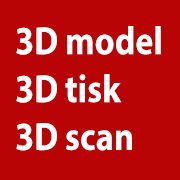
Reklama
3D tiskárny



AONN.cz
Sp┼Ö├ítelen├ę Weby
|
3D modely ARTPierced Hemisphere at Tate Britain, London

Title Pierced Hemisphere II Artist Dame Barbara Hepworth (1903 - 1975) Date 8/1/1937 Medium Hoptonwood Stone Dimensions 435 x 380 x 380 Collection Tate Acquisition Accepted by HM Government in lieu of inheritance tax and allocated to Tate 2004 Reference T11785 Pierced Hemisphere II 1937–8 is an abstract hemispherical sculpture by the British artist Barbara Hepworth. Carved from Hoptonwood stone, the hemisphere sits on a square base of Portland stone and is rolled backwards slightly so that the flat face of the sculpture tilts upward. Above and to the left of the hemisphere’s central axis, a large hole punctures the work from one side through to the other. This opening is bevelled on the flat face of the work, widening outwards and downwards at the mouth, allowing the viewer to see into the work’s interior. In addition to the circular piercing, a deep cut runs along the right side of the perimeter of the hemisphere’s flat face, tapering off at its uppermost mid-point and emphasising the smooth circularity of the work’s composition. The pierced hole appears smaller and tighter on the hemisphere’s convex side, creating either a dark spot on the sculpture’s surface, a view into the interior, or a shadow, depending on the viewer’s position in relation to the object. Both Hoptonwood and Portland stone are types of limestone that have a granular appearance, and although the Hoptonwood hemisphere is warmer in hue than the cold grey Portland stone base, both forms possess variation in colour and texture. Hepworth made this sculpture in her studio at The Mall, Parkhill Road, in London’s Hampstead, where she lived and worked from 1928 to 1939. Pierced Hemisphere II was produced using a sculptural technique known as direct carving. First introduced by the French artist Constantin Brancusi in 1906, this technique was further developed by Hepworth and fellow artists Henry Moore, John Skeaping and Ben Nicholson in the 1920s and 1930s. Direct carving is a process in which no models or sculptural maquettes are used to plan the work, but rather the final form of the sculpture emerges through the act of carving the material (see the discussion of Hepworth’s approach to direct carving in Curtis 1994, p.15). Through this technique, these artists emphasised the inherent properties of the materials, and the marble, stone and wood that they used was rubbed and polished in order to enhance its natural texture, colours and markings. This sculpture was preceded by Pierced Hemisphere 1937 (The Hepworth Wakefield, Wakefield), which Hepworth carved from white marble but that similarly takes the form of a half sphere rolled slightly backwards so that its flat face is presented at an angle. Curator Matthew Gale has discussed the significance of the different materials used to produce these two works: In many respects Hepworth’s change from the finely veined marble of the firstPierced Hemisphere to the darker, more granular quality of the Hoptonwood stone may be seen as opening an ideological dialogue … A native British stone, Hoptonwood was associated with a legacy of craftsmanship on which Hepworth had drawn in works such as Torso 1928 (Tate T03128) and which she shared with John Skeaping, Henry Moore, Jacob Epstein and others in the 1920s.(Gale in Tate Acquisition Report, p.2, Tate Acquisition File, Barbara Hepworth.) Commonly used for architectural reliefs and gravestones due to its high durability, Hoptonwood stone was employed to create decorative features for a number of notable British public buildings, including the Houses of Parliament (1840–70) and the Bank of England (1925–39). As result of its affiliations with architecture and craftsmanship, Hoptonwood stone held a particular utilitarian resonance for Hepworth, Moore and Skeaping when employed in their works. Hepworth used the oval, sphere and hemisphere and the pierced form frequently in her works until her death in 1975 (see, for example, Sphere with Inner Form 1963, Tate T03146, and Two Forms (Divided Circle) 1969, Tate T03149). Although these sculptures are largely abstract in appearance, in her 1971 autobiography the artist explained that ‘The closed form, such as the oval, spherical or pierced form (sometimes incorporating colour) … translates for me the association and meaning of gesture in landscape’ (Hepworth 1971, accessed 24 February 2015). Pierced Hemisphere II was first exhibited in 1938 at the Stedelijk Museum in Amsterdam and later purchased from the artist in around 1943 by her close friends and supporters Mr and Mrs J.R.M. Brumwell. The sculpture was kept in the couple’s garden until it was acquired by Tate in 2004, and as a result it bears some weather marks and lichen scarring on its surface. (Source; Tate, Judith Wilkinson, February 2015) n├íhodn├Ż v├Żb─Ťr model┼»
|
©Ofrii 2012
| |||